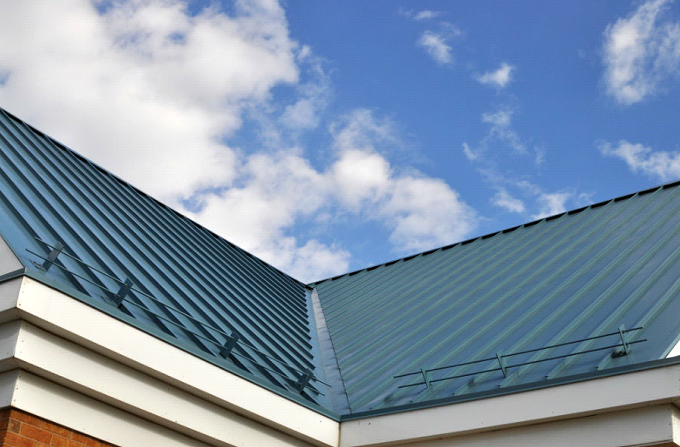Blog Layout
How Metal Shingles Beat These 3 Common Roofing Issues
Admin • Oct 16, 2020

The roof over your head represents a significant investment but is important because it helps protect your home and family. Homeowners opt for different types of roofing materials such as asphalt or wood for the benefits they offer. Asphalt shingles are extremely affordable, but wooden shakers exude a warmth and beauty only natural wood can bring.
But have you considered metal as a roofing option? You may be surprised to learn that metal shingles outperform many traditional roofing options under certain circumstances. Discover how metal beats three common roofing issues that can ruin your home's integrity and value.
1. Wood Rot and Weathering
Wood or shake shingles are a popular roofing material because of their availability and sustainability. Cedar and other softwood shingles, unfortunately, are susceptible to water as well as the passage of time.
The edges of wood shingles are prone to damage first because they are the most exposed. Over time, edges can curl slightly and allow water to enter below and between neighboring shingles. Unless shingles have regular and proper sealing, wood can rot and fade in color to a silvery-grey.
Metal shingles will never rot because they are not a biodegradable product. Instead, metal shingles retain their original structure and shape as well as stay true to color.
2. Damage From Animals, Trees, and Biological Growth
A common problem with many traditional roofing materials is their susceptibility to damage from a range of outside forces. Animals may choose to nest or live on or beneath asphalt or wood shingles. Birds, rodents, and raccoons damage roofing material as they gnaw and burrow through weak points to access warm, dry spaces below.
Trees can cause damage when a branch falls onto the roof during a storm. Sharp branches can scrape and penetrate below asphalt shingles. Even pine needle litter is acidic enough to harm asphalt shingles.
Finally, biological growth such as algae or moss can damage composite roofing materials as excessive moisture from rain and humidity prompts their growth. Biological growth creates discoloration and slippery surfaces. Algae, in particular, feeds on mineral nutrients like calcium carbonate used in asphalt shingle filler.
Metal shingles are every homeowner's dream come true because of their ability to resist damage from environmental threats like animals, trees, and biological growth. Most animals are not able to gnaw or dig through metal, which is strong enough to repel scrapes and pokes from branches. Metal also does not stain or encourage algae growth.
3. Leaks Due to Loss of Granules
Tiny mineral granules in your gutter and on the ground are a signal that asphalt shingles are nearing the end of their life. UV radiation and the freeze-thaw cycle contribute to the degradation of the bond between asphalt and its protective granules on each shingle. Granule loss means shingles will absorb more moisture, split, curl, and crack.
An asphalt roof is more likely to leak when it reaches the end of its life, usually 12–20
years. However, a metal roof will not succumb as readily to UV radiation, the freeze-thaw cycle, or loose granules. Metal shingles last 50 years or more.
Metal roofing material is the solution for a roof that appears too boring or traditional. A metal standing seam roof is uniquely different from standard rows of individual shingles. Instead, metal sections fit together to form vertical seams similar to a barn or commercial establishment.
If you want a roof with an edgy industrial feel or the look of a warm rural barn, look to a metal standing seam roof. This roof style has all the same benefits of metal shingles. Visit Urban Exterior Co.
for more roofing choices that enhance and protect your home.
Browse Our Website
Contact Information
Area Served: Columbus, OH
Phone: 614-927-7663
Email: austin@urbanexteriorco.com
Payment Options:

Licensed, Insured and Bonded
Business Hours
- Monday
- -
- Tuesday
- -
- Wednesday
- -
- Thursday
- -
- Friday
- -
- Saturday
- Closed
- Sunday
- Closed
Content, including images, displayed on this website is protected by copyright laws. Downloading, republication, retransmission or reproduction of content on this website is strictly prohibited. Terms of Use
| Privacy Policy
